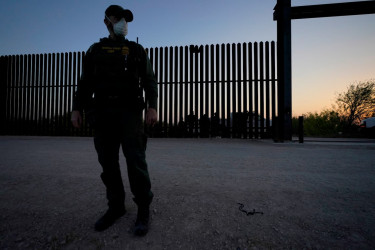WELL BEFORE HE stormed the United States Capitol on January 6, Christian Secor was a pariah at UCLA. Those who valued their safety steered clear of the 22-year-old self-described fascist, who named his online avatar for a mass shooter. Numerous students had reported him to university administrators for violent and extremist commentary. Now he faces multiple criminal charges — including assaulting, resisting, or impeding officers — in connection with the Capitol riot.
Yet Secor is also an archetype. His anti-government, anti-immigrant, anti-integrationist views are resurging in Southern California. A group of white suburban radicals in Orange County have been protesting government lockdown measures and amplifying conspiracies about perceived enemies with racist undertones and overtones. Some joined Secor for the “Stop the Steal” rally in Washington, where they called for a “biblical war” and the “shedding of blood.” One protestor bellowed that the only solution to “traitors” in Washington — that is, those who would certify the decisive electoral victory of President Joe Biden — was to “take them out back and shoot or hang them.”
Such characters are more representative of California than we care to admit. They belong to a white supremacist vigilante tradition as old as Anglo settlement of the state itself. The ethnic and racial diversity that makes California desirable to many residents today also made it a breeding ground for vigilante violence for nearly a century. Some scholars have dedicated themselves to uncovering the long career of white supremacy in California, with a renewed sense of urgency. As their work shows, the state’s reputation for cultural pluralism and progressive policy-making has only come recently and not without a fight.
In the mid-19th century, Black residents constituted only one percent of the state’s total population, but they occupied an outsize space in the fevered imaginations of white Californians. The Chinese were considered an even greater threat. By 1870, immigrants from China amounted to 10 percent of the state’s population and a quarter of the total workforce. No group was more brutally targeted than California Natives. As Ben Madley has shown, the once flourishing population of Indigenous people endured decades of genocidal warfare and numbered no more than 30,000 by 1873.
Vigilantism thrived in Southern California’s frontier conditions. Sparse settlement, weak institutions, and male-heavy populations didn’t make bloodshed inevitable but certainly more likely. Much of this violence hinged on a common belief that law enforcement was ill-equipped to meet the people’s needs. There’s a kernel of truth to the Wild West depictions of lawlessness in places like frontier California. As John Mack Faragher has shown, mid-19th century Los Angeles was plagued by extralegal violence, with a murder rate matching those in Mexican border towns at the height of the cartel wars in the early 2000s.











